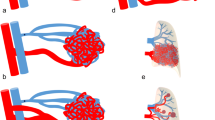Abstract.
Pulmonary arteriovenous fistulas (PAVFs) are rare vascular malformations of the lung. There is a strong association with Rendu-Osler-Weber disease. Although most patients are asymptomatic, PAVFs can cause dyspnea from a right-to-left shunt. They can also bleed and result in hemoptysis and hemothorax. Because of paradoxical emboli, various central nervous system complications have been described including stroke, and brain abscess. Currently, spiral computed tomography offers the most practical method for establishing the presence of PAVFs. Most patients should be treated. Therapeutic options include angiographic embolization with metal coils or balloon occlusion and surgical excision. Angiographic treatment has become the mainstay of therapy for most patients during the last decade. It is less invasive and can be repeated easily. Surgery, which usually consists of a conservative lung resection, is associated with low morbidity and a low recurrence rate. Both therapeutic approaches are discussed. The Mayo Clinic surgical experience of the last 20 years for PAVFs is presented.
Similar content being viewed by others
Author information
Authors and Affiliations
Rights and permissions
About this article
Cite this article
Pick, A., Deschamps, C. & Stanson, A. Pulmonary Arteriovenous Fistula: Presentation, Diagnosis, and Treatment. World J. Surg. 23, 1118–1122 (1999). https://doi.org/10.1007/s002689900634
Published:
Issue Date:
DOI: https://doi.org/10.1007/s002689900634




